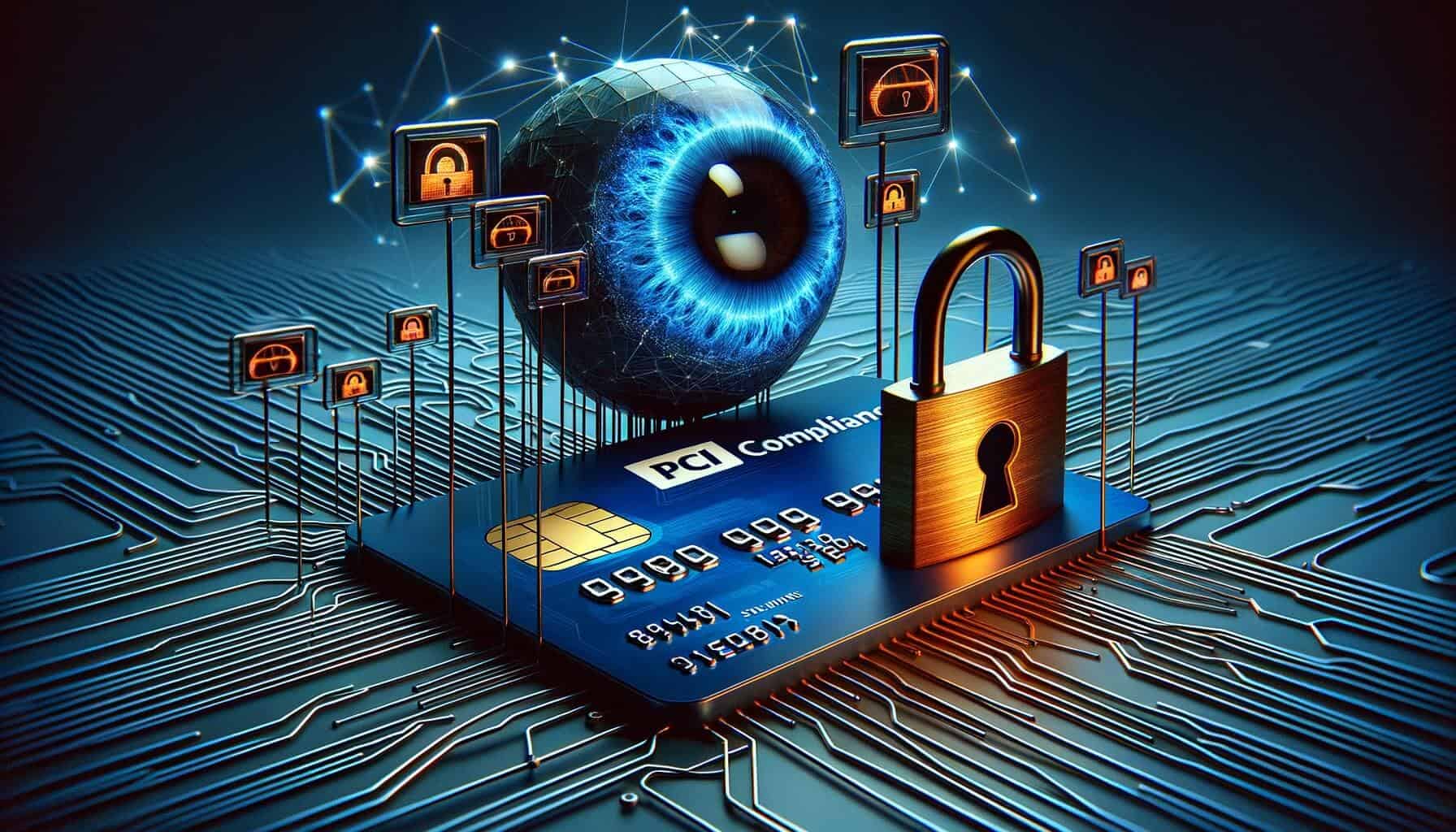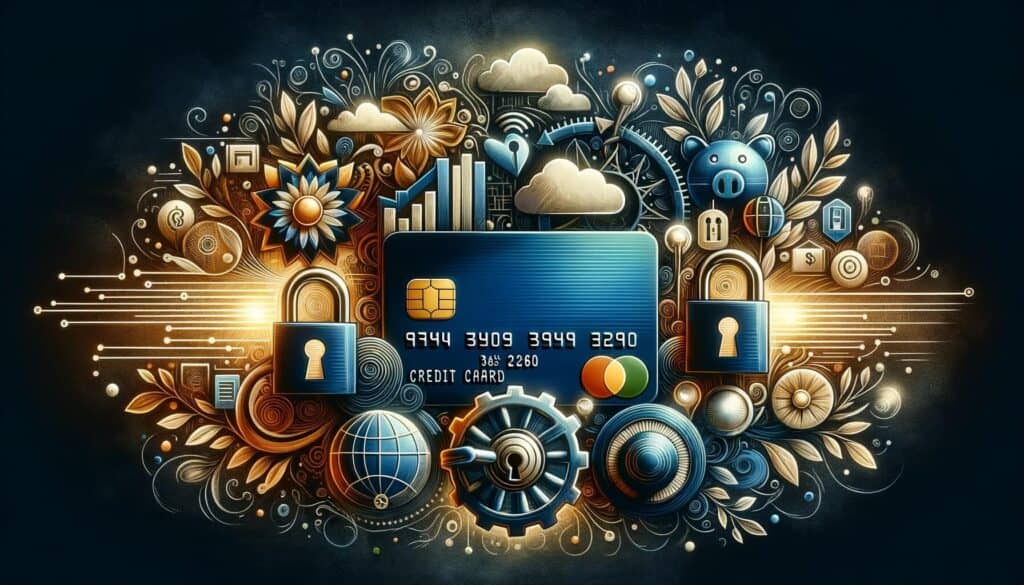
By admin February 19, 2025
In today’s digital age, where online transactions have become the norm, businesses face an ever-increasing risk of payment card fraud. To combat this threat, it is crucial for businesses to implement robust security measures. Two key strategies that can significantly enhance a company’s security posture are PCI compliance and real-time fraud monitoring.
By pairing these two approaches, businesses can create a formidable defense against payment card fraud. This article will delve into the importance of pairing PCI compliance with real time fraud monitoring, explaining what each concept entails, their benefits, implementation strategies, best practices, common challenges, and the role of technology in enhancing these measures.
What is PCI Compliance and Why is it Essential for Businesses?

PCI compliance refers to adherence to the Payment Card Industry Data Security Standard (PCI DSS), a set of security standards established by major credit card companies to protect cardholder data. Compliance with these standards is essential for businesses that handle payment card information, as it helps prevent data breaches and protects both the business and its customers from financial losses and reputational damage.
PCI compliance encompasses various requirements, including maintaining a secure network, protecting cardholder data, regularly monitoring and testing networks, and implementing strong access control measures. By complying with these standards, businesses demonstrate their commitment to safeguarding sensitive payment card information, instilling trust in their customers and partners.
Real-Time Fraud Monitoring: An Effective Strategy to Combat Payment Card Fraud

While PCI compliance sets the foundation for secure payment card processing, real-time fraud monitoring adds an extra layer of protection by actively detecting and preventing fraudulent transactions. Real time fraud monitoring involves the continuous monitoring of payment card transactions in real-time, using advanced algorithms and machine learning techniques to identify suspicious patterns and behaviors.
By analyzing various data points, such as transaction amounts, locations, and customer behavior, real-time fraud monitoring systems can quickly identify potential fraudulent activities and trigger alerts for further investigation. This proactive approach enables businesses to take immediate action to prevent fraudulent transactions, minimizing financial losses and protecting their customers’ sensitive information.
The Benefits of Pairing PCI Compliance with Real-Time Fraud Monitoring

Pairing PCI compliance with real-time fraud monitoring offers several significant benefits for businesses. Firstly, it provides a comprehensive security framework that addresses both the prevention and detection of payment card fraud. By implementing PCI compliance measures, businesses establish a strong foundation for secure payment card processing. Real time fraud monitoring complements this by actively monitoring transactions and detecting fraudulent activities in real-time, allowing for immediate action.
Secondly, pairing these two strategies helps businesses meet regulatory requirements and industry standards. PCI compliance is mandated by major credit card companies, and failure to comply can result in severe penalties, including fines and loss of card processing privileges. By implementing real-time fraud monitoring, businesses demonstrate their commitment to protecting cardholder data and complying with industry regulations.
Furthermore, pairing PCI compliance with real time fraud monitoring enhances customer trust and loyalty. Customers are increasingly concerned about the security of their payment card information, and businesses that prioritize security measures are more likely to attract and retain customers. By actively monitoring transactions and preventing fraudulent activities, businesses can assure their customers that their sensitive information is safe, fostering trust and loyalty.
Implementing Real-Time Fraud Monitoring: A Step-by-Step Guide

Implementing real-time fraud monitoring requires careful planning and execution. Here is a step-by-step guide to help businesses effectively implement this strategy:
1. Assess your current payment card processing system: Before implementing real time fraud monitoring, evaluate your existing payment card processing system to identify any vulnerabilities or gaps in security. This assessment will help you understand the specific areas where real-time fraud monitoring can add value.
2. Select a real-time fraud monitoring solution: Research and select a real time fraud monitoring solution that aligns with your business needs and budget. Consider factors such as the solution’s ability to analyze large volumes of data, its accuracy in detecting fraudulent activities, and its integration capabilities with your existing payment card processing system.
3. Integrate the real-time fraud monitoring solution: Work with your IT team or solution provider to integrate the real time fraud monitoring solution into your payment card processing system. Ensure that the solution is properly configured to analyze transaction data in real-time and trigger alerts for potential fraudulent activities.
4. Train your staff: Provide comprehensive training to your staff on how to use the real-time fraud monitoring solution effectively. Educate them on the various types of payment card fraud, common fraud indicators, and the appropriate actions to take when alerted to potential fraudulent activities.
5. Establish response protocols: Develop clear response protocols for handling potential fraudulent activities. Define roles and responsibilities, establish escalation procedures, and ensure that your staff is aware of the steps to take when a potential fraud alert is triggered.
6. Monitor and analyze alerts: Continuously monitor and analyze the alerts generated by the real-time fraud monitoring solution. Investigate any suspicious activities promptly and take appropriate action, such as blocking transactions or contacting customers for verification.
7. Regularly review and update your fraud monitoring strategy: Fraudsters are constantly evolving their tactics, so it is essential to regularly review and update your fraud monitoring strategy. Stay informed about the latest fraud trends and adjust your monitoring parameters and rules accordingly.
Best Practices for Achieving PCI Compliance in Conjunction with Real-Time Fraud Monitoring
Achieving PCI compliance in conjunction with real time fraud monitoring requires a comprehensive approach. Here are some best practices to consider:
1. Understand the PCI DSS requirements: Familiarize yourself with the specific requirements outlined in the PCI DSS. Ensure that you understand the scope of your compliance obligations and the steps needed to meet each requirement.
2. Conduct regular vulnerability scans and penetration tests: Regularly scan your network and systems for vulnerabilities and conduct penetration tests to identify potential security weaknesses. Address any vulnerabilities promptly to maintain a secure environment.
3. Encrypt sensitive cardholder data: Implement strong encryption measures to protect sensitive cardholder data both in transit and at rest. Encryption ensures that even if data is intercepted, it remains unreadable and unusable to unauthorized individuals.
4. Implement multi-factor authentication: Require multiple forms of authentication, such as passwords and biometrics, to access sensitive systems and data. Multi-factor authentication adds an extra layer of security, making it more difficult for unauthorized individuals to gain access.
5. Monitor and log all access to cardholder data: Implement robust logging mechanisms to track and monitor all access to cardholder data. Regularly review these logs to detect any unauthorized access or suspicious activities.
6. Regularly update and patch systems: Keep your systems and software up to date with the latest security patches and updates. Regularly patching vulnerabilities helps protect against known exploits and reduces the risk of unauthorized access.
7. Train employees on security best practices: Educate your employees on security best practices, such as creating strong passwords, recognizing phishing attempts, and securely handling payment card information. Regularly reinforce these practices through training and awareness programs.
Common Challenges and Solutions in Pairing PCI Compliance with Real-Time Fraud Monitoring
Pairing PCI compliance with real-time fraud monitoring can present certain challenges. Here are some common challenges and their corresponding solutions:
1. Integration complexities: Integrating a real time fraud monitoring solution with an existing payment card processing system can be complex. To overcome this challenge, work closely with your IT team or solution provider to ensure seamless integration and proper configuration.
2. False positives: Real-time fraud monitoring systems may generate false positive alerts, flagging legitimate transactions as potentially fraudulent. To address this issue, fine-tune the monitoring parameters and rules to reduce false positives without compromising the system’s ability to detect actual fraud.
3. Resource constraints: Implementing and maintaining PCI compliance and real time fraud monitoring can require significant resources, including financial, technical, and human resources. To overcome this challenge, consider outsourcing certain aspects, such as the management of real-time fraud monitoring, to specialized service providers.
4. Evolving fraud tactics: Fraudsters are constantly evolving their tactics, making it challenging to stay ahead of new threats. To address this challenge, stay informed about the latest fraud trends and collaborate with industry peers and security experts to share information and best practices.
The Role of Technology in Enhancing PCI Compliance and Real-Time Fraud Monitoring
Technology plays a crucial role in enhancing both PCI compliance and real time fraud monitoring. Here are some key technological advancements that can enhance these measures:
1. Artificial Intelligence and Machine Learning: AI and machine learning algorithms can analyze vast amounts of transaction data and identify patterns indicative of fraudulent activities. These technologies can continuously learn and adapt to new fraud tactics, improving the accuracy and effectiveness of real-time fraud monitoring.
2. Tokenization: Tokenization replaces sensitive cardholder data with unique tokens, rendering the data useless to fraudsters even if it is intercepted. Tokenization enhances both PCI compliance and real time fraud monitoring by reducing the amount of sensitive data that needs to be stored and transmitted.
3. Biometrics: Biometric authentication, such as fingerprint or facial recognition, provides a secure and convenient method for verifying the identity of individuals accessing sensitive systems or making transactions. Biometrics can enhance both PCI compliance and real-time fraud monitoring by adding an extra layer of security.
4. Big Data Analytics: Big data analytics can process and analyze large volumes of transaction data in real-time, enabling businesses to identify patterns and anomalies indicative of fraudulent activities. By leveraging big data analytics, businesses can enhance their real-time fraud monitoring capabilities and improve their ability to detect and prevent fraud.
Frequently Asked Questions (FAQs)
Q1. What is PCI compliance?
A1. PCI compliance refers to adherence to the Payment Card Industry Data Security Standard (PCI DSS), a set of security standards established by major credit card companies to protect cardholder data.
Q2. Why is PCI compliance essential for businesses?
A2. PCI compliance is essential for businesses that handle payment card information as it helps prevent data breaches and protects both the business and its customers from financial losses and reputational damage.
Q3. What is real-time fraud monitoring?
A3. Real-time fraud monitoring involves the continuous monitoring of payment card transactions in real-time, using advanced algorithms and machine learning techniques to identify suspicious patterns and behaviors.
Q4. How does pairing PCI compliance with real-time fraud monitoring benefit businesses?
A4. Pairing PCI compliance with real-time fraud monitoring provides a comprehensive security framework, helps businesses meet regulatory requirements, enhances customer trust and loyalty, and minimizes financial losses from fraudulent activities.
Q5. What are some best practices for achieving PCI compliance in conjunction with real-time fraud monitoring?
A5. Best practices include understanding the PCI DSS requirements, conducting regular vulnerability scans and penetration tests, encrypting sensitive cardholder data, implementing multi-factor authentication, monitoring and logging all access to cardholder data, regularly updating and patching systems, and training employees on security best practices.
Conclusion
In conclusion, pairing PCI compliance with real-time fraud monitoring is a powerful strategy for businesses to combat payment card fraud effectively. PCI compliance sets the foundation for secure payment card processing, while real-time fraud monitoring adds an extra layer of protection by actively detecting and preventing fraudulent transactions.
By implementing these measures in conjunction, businesses can create a robust security framework that addresses both prevention and detection of payment card fraud. Through careful implementation, adherence to best practices, and leveraging technological advancements, businesses can enhance their security posture, meet regulatory requirements, and instill trust in their customers.
By prioritizing the pairing of PCI compliance with real-time fraud monitoring, businesses can safeguard their financial interests, protect their customers’ sensitive information, and maintain a strong reputation in the digital marketplace.